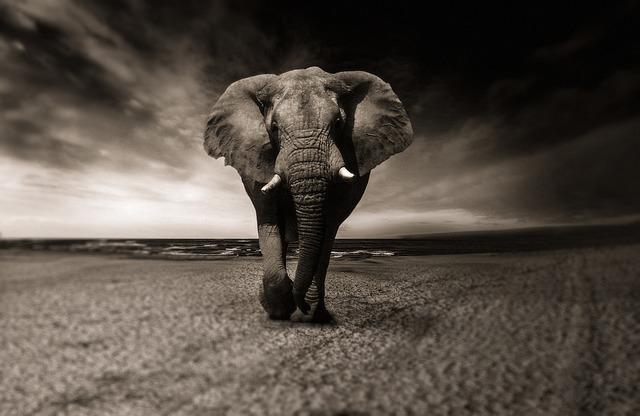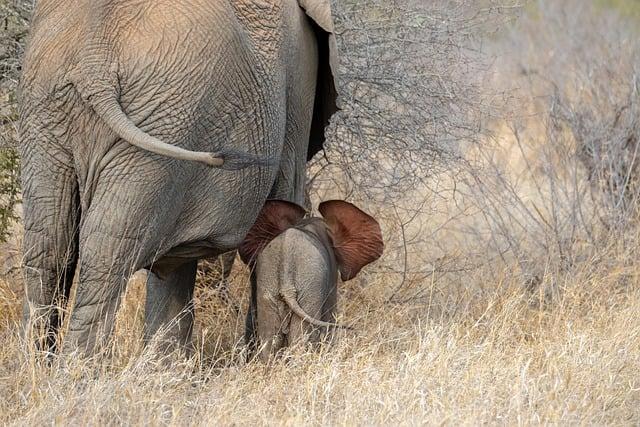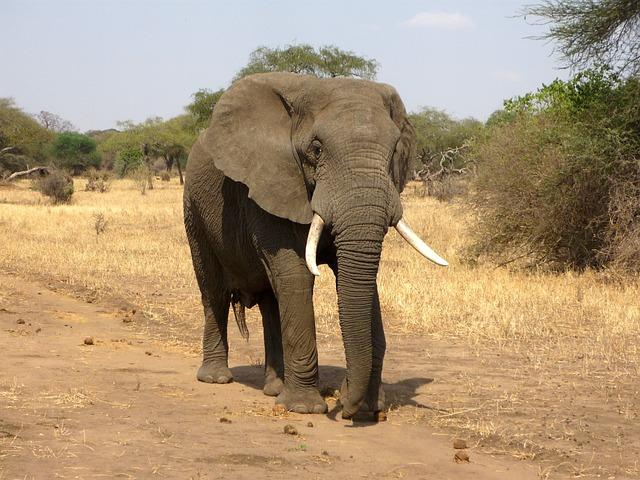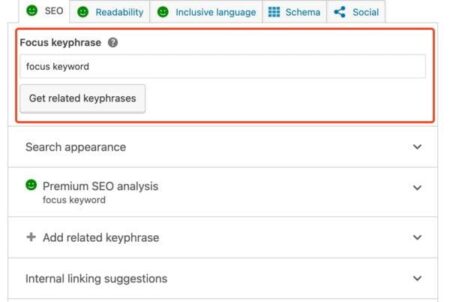In a controversial move aimed at addressing a growing humanitarian crisis, the Zimbabwean government has announced plans to cull 200 elephants to supplement food supplies for citizens facing severe hunger due to an ongoing drought. As climate change exacerbates weather irregularities in the region, millions are left struggling to secure basic sustenance, prompting authorities to turn to drastic measures. This decision has sparked international debate over wildlife conservation and the ethical implications of using wildlife resources to alleviate human suffering. In this article, we explore the context of Zimbabwe’s drought, the rationales behind the cull, and the broader implications for conservation efforts and local communities.
Impact of drought on zimbabwe’s Food Security and Wildlife
The ongoing drought in Zimbabwe has created a critical situation affecting both food security and wildlife conservation. As crop yields decline due to insufficient rain, communities are facing severe hunger, causing the government to take drastic measures. The decision to cull elephants is not merely a wildlife management issue; it embodies the struggle between human and wildlife survival in the face of environmental crisis. The elephants, majestic symbols of the region, are becoming a resource in a desperate effort to feed the population, highlighting the unsettling choices that communities must make when confronting the realities of climate change and scarcity.
Moreover, the implications of such a culling initiative extend far beyond immediate food relief. It raises profound questions about biodiversity, sustainable management, and the balance of ecosystems where these elephants roam.Balancing the needs of human populations with the conservation of wildlife requires thorough strategies that address the root causes of drought and food insecurity. Understanding these dynamics is crucial for future policymaking, focusing on long-term sustainable agriculture, water resource management, and community resilience. The following table outlines the potential impacts of drought on both human communities and wildlife in Zimbabwe:
| Impact Area | Human Consequences | Wildlife Consequences |
|---|---|---|
| Food Security | Increased hunger and malnutrition | Reduced vegetation and habitat loss |
| livelihoods | Economic instability for farmers | Displacement of animals due to habitat degradation |
| Human-Wildlife Conflict | Threatened community safety | Endangered species from culling or poaching |

Understanding the Necessity Behind the Culling of Elephants
The decision to cull elephants in Zimbabwe stems from a complex interplay of environmental, economic, and social factors. Drought, which has substantially impacted the region, has led to food shortages for many communities. Elephants, as large herbivores, can exacerbate these crises by competing for limited resources, leading to increased human-wildlife conflict.The culling can be seen as a controversial yet strategic measure intended to not only manage elephant populations but also alleviate the suffering of local people who are struggling to survive amidst dire circumstances.
In addressing this issue, authorities emphasize the following points:
- Human-wildlife Conflict: With dwindling food sources, elephants often encroach on farmlands, causing crop destruction.
- Conservation Versus Immediate Needs: Balancing the conservation of wildlife with the urgent needs of local populations is critical.
- Community Engagement: Involving local communities in wildlife management decisions ensures their voices are heard and their needs prioritized.
- long-Term Solutions: Discussions on sustainable practices and choice livelihoods are essential to prevent future crises.

Ecological Considerations: The Consequences of Reducing Elephant Populations
The decision to cull elephant populations carries profound ecological implications that extend far beyond the immediate context of feeding a struggling human population. Elephants play a crucial role as a keystone species within their ecosystems,influencing the structure and composition of their habitats. When elephant numbers dwindle, we risk destabilizing local ecosystems through a variety of interconnected pathways:
- Habitat Alteration: Elephants help maintain the savanna and forest ecosystems through their feeding habits, contributing to vegetation diversity.
- Water Source management: Their movement patterns create water holes that many other species depend on during dry seasons.
- Seed dispersal: Elephants are vital for long-distance seed dispersal,improving plant diversity and aiding forest regeneration.
Moreover, the long-term consequences of a significant population reduction could manifest in an uptick of other herbivore species, leading to overgrazing and further habitat degradation. The balance of predator and prey dynamics may also shift, creating unforeseen cascading effects that adversely impact biodiversity. The following table summarizes potential ecological impacts consequently of reduced elephant populations:
| Impact | Description |
|---|---|
| Vegetation Decrease | Reduction in plant diversity as elephants stop foraging. |
| Wildlife Displacement | Other species may move out or decline due to habitat changes. |
| Increased Human-Wildlife Conflict | Changes in land use may lead to more encounters with human populations. |

Human-Wildlife Conflict: Balancing Community Needs and Conservation Efforts
The decision to cull elephants in Zimbabwe highlights the increasingly urgent need to reconcile human and wildlife interests in regions where natural resources are strained. As climate change contributes to severe droughts, communities face food shortages, leading to desperate measures. This situation brings into focus the delicate dance between conservation initiatives and the immediate survival needs of local populations. Key factors influencing this dilemma include:
- Economic Pressure: with dwindling agricultural outputs, many rural families depend on wildlife for food.
- Conservation vs. Livelihoods: Protecting wildlife may limit economic opportunities for residents struggling to make ends meet.
- Community Engagement: Involving local populations in conservation efforts can lead to more sustainable solutions.
As Zimbabweans grapple with the fallout from drought-induced hunger, wildlife management strategies must evolve.Effective solutions require collaboration among governments,NGOs,and local communities to ensure that wildlife conservation efforts also consider human welfare. proposals for alternative measures may include:
| Alternative Measures | Description |
|---|---|
| Community-based Management | Encouraging locals to oversee and benefit from wildlife protection. |
| Wildlife Translocation | Relocating animals to less populated areas to reduce conflict. |
| Food Aid Programs | Providing immediate food support to vulnerable populations. |

Recommendations for Sustainable Wildlife Management and Food Aid Programs
To address the challenges posed by wildlife population control while ensuring food security for vulnerable communities, it is indeed crucial to adopt multifaceted and sustainable approaches. Focused strategies should include:
- Community Engagement: Involving local communities in wildlife management decisions promotes stewardship and sustainable practices.
- Alternative food Sources: Investing in agricultural development to create resilient food systems can reduce reliance on wildlife culling.
- Ecotourism Opportunities: Supporting ecotourism initiatives can generate income while incentivizing wildlife preservation.
- Wildlife Corridors: Establishing designated corridors for wildlife ensures safe migration and reduces human-animal conflict.
Moreover, implementing effective food aid programs requires careful coordination and targeting to meet the needs of affected populations. Recommended practices include:
| Program Type | Description |
|---|---|
| Nutritional Assistance | Providing essential nutrients to drought-affected communities, emphasizing local food preferences. |
| capacity Building | Training farmers in sustainable practices to increase food production in the long term. |
| Monitoring & Evaluation | Establishing systems for tracking food aid distribution and assessing its impact on community needs. |

Long-term Solutions: Addressing the Root Causes of Food Insecurity in Zimbabwe
Addressing food insecurity in Zimbabwe cannot merely involve short-term fixes; it demands a comprehensive approach that tackles the underlying factors contributing to this crisis. Some of the root causes include severe climate change effects, economic instability, and the unsustainable agricultural practices that weaken food systems. Sustainable solutions must focus on:
- Investing in Agricultural Technology: Implementing innovative farming techniques that improve yield and resilience against drought.
- Policy Reform: Enacting policies that provide farmers with access to necessary resources such as seeds, fertilizer, and training.
- Diverse Crop Cultivation: encouraging the growth of drought-resistant crops to enhance food security.
- Support for Local Farmers: Strengthening local markets to allow farmers to sell produce directly to consumers, thus boosting local economies.
Furthermore,it is essential to foster partnerships between the government,NGOs,and international aid organizations to create a robust framework aimed at empowering communities. By integrating social safety nets and community-based programs, Zimbabwe can build resilience against future shocks.A collaborative effort can help establish a sustainable food system that not only meets the immediate needs but ensures long-term food security, thereby transforming the narrative from dependency to self-sufficiency.

Future Outlook
Zimbabwe’s decision to cull 200 elephants in response to the severe drought underscores the complex interplay between wildlife management and human survival. As the nation grapples with food insecurity and the adverse effects of climate change, this controversial measure seeks to address immediate hunger needs while raising significant ethical and conservation concerns. The situation highlights the urgent need for sustainable solutions that balance the welfare of both human populations and wildlife. As Zimbabwean authorities navigate this challenging landscape, the global community watches closely, emphasizing the importance of innovative strategies for conservation and food security in a changing environment. The outcome of this initiative could set a precedent for how nations confront similar crises in the future.







